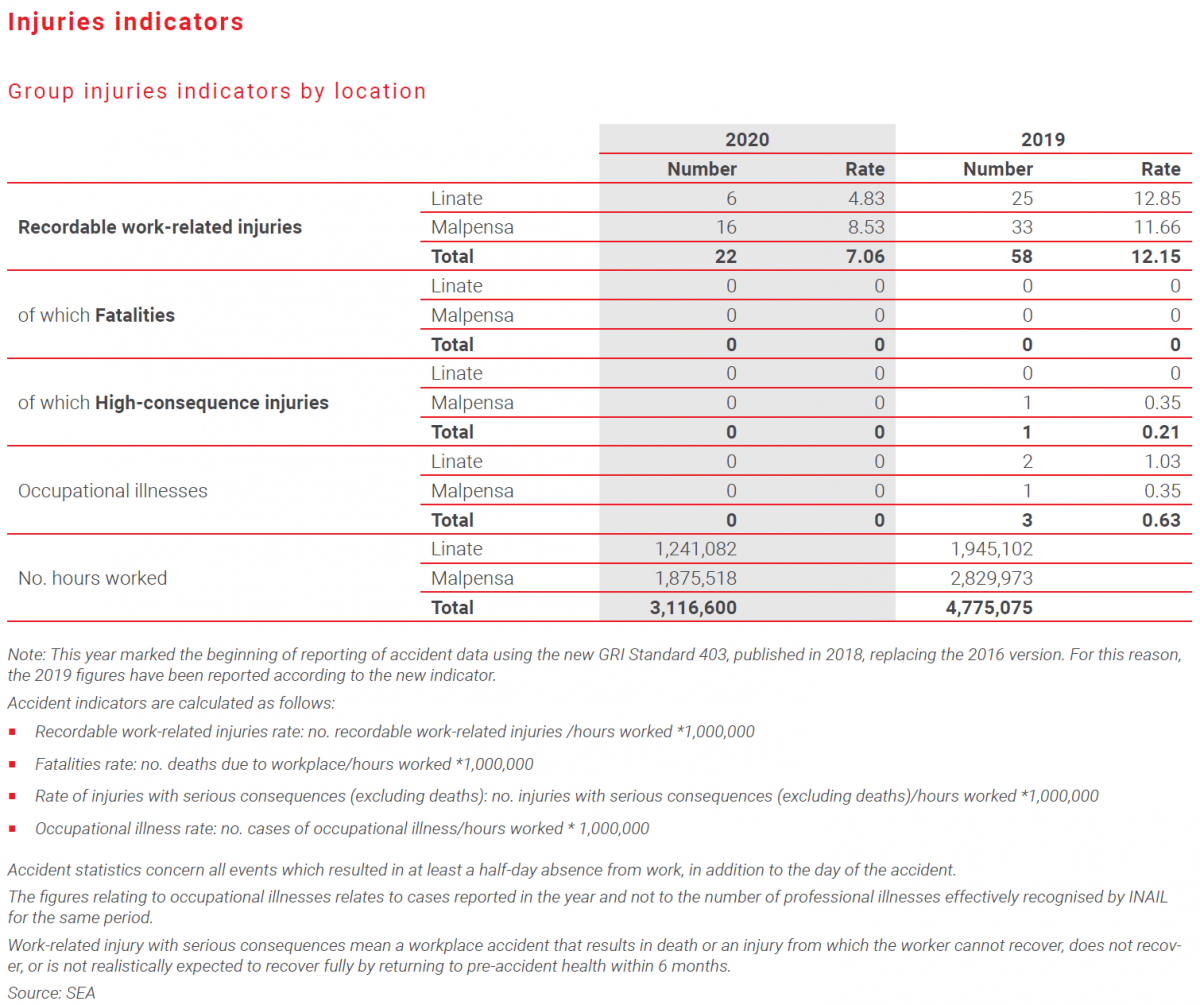
At 31 December 2020, the total resources of the Group amounted to 2,751 units (2,788 if we also consider temporary workers), a reduction of 12 units compared to the data at the end of 2019 (-0.4%). Women represent almost 29% of the employees and their presence, concentrated in the clerical category characterized by front-end tasks, is thus distributed among the total staff: 4% executives-cadres, 23% clerical workers and less than 2% blue-collar workers. The preponderant presence of men in the working class is motivated by the specific legislation on airport operations, which penalizes the female working population compared to the male one.

Work safety
The company policy in relation to the protection of health and safety in the workplace for employees and third parties (operators, users, passengers) present in the workplace is based on some principles:
- compliance with national, local and community legislation on health and safety at work, and the requirements defined by SEA for the achievement of company objectives, considering, where applicable, also voluntary models;
- carrying out prevention activities aimed at reducing accidents, injuries and occupational diseases, through the identification and elimination of hazards, the reduction of risks, the implementation of corrective measures and the management of possible emergencies, in favor of both workers that of third parties and the community in which SEA operates;
- information to all those present in the corporate environment on the risks identified and the related prevention and protection rules adopted, as well as on the organization responsible for managing safety and emergencies;
- enhancement of personnel through information / training and training activities aimed at developing specific skills, key elements in order to make workers aware of their responsibilities and the need to operate in compliance with current legislation and internal operating rules;
- maintaining a constant involvement of workers in the activities implemented by SEA and the company objectives defined for health and safety, promoting consultation and participation, also making use of the support of the Workers' Safety Representatives;
- availability of economic and financial resources necessary for the search for new technical, organizational and procedural solutions aimed at reducing risks and achieving greater efficiency in the management of prevention activities;
- selection and monitoring of its suppliers, also considering aspects relating to health and safety in the workplace and promoting coordination activities for the management and resolution of any risk situations, with a view to mutual collaboration;
- promotion by the Management of initiatives aimed at spreading a culture of health and safety at all company levels, which aim at interaction and collaboration between the various actors involved to improve the efficiency of business processes and the effectiveness of the OHSMS.
The role of airport manager entailed a particular commitment for the SEA Group also in terms of safety at work, from which all the operators, bodies, handlers, who are present in various capacities in the airport grounds, benefited from it.
The analysis of the accident phenomenon of employees in 2020 highlights:
- an increase in the number of events at work compared to the previous year (particularly positive) and a relative increase in the relative days lost, which overall led to an increase in the accident rates in 2020;
- a case study that can be divided into these terms:
- 27% accidents while traveling;
- 28% directly related to work operations
- 45% events that have little or nothing to do with work operations, being mainly related to the dynamics of walking (stumbling, slipping, sprains, collisions, etc.).

